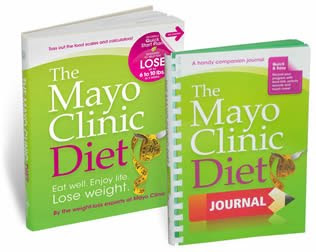
You can encourage your kids to cook healthy meals by getting them involved in the process. Let them pick the fruits and veggies they like. You can give them a variety of vegetables so they can choose the one that appeals to them. You can start a healthy eating pattern by listening to their feedback. Keep them hydrated to stay hydrated. Encourage them to be involved in the creation of their favorite meals.
Children are not fond of bland foods. Many of their favorite foods are full of fat, salt, and sweetness. This flavor boost is what allows children to discover delicious tastes. That kind of sensation isn't possible with fresh vegetables and fruits. Parents can change from high-calorie snacks, to more fruit-based meals or snacks. This will help make the transition smoother. Parents can choose to replace unhealthy snack options with healthy ones, rather than restricting their snack intake.

Changes in their eating habits can take some time. It's easy to make many different foods and smoothies. But it's important to ensure your child is getting the nutrition they need. A healthy diet can have a significant impact on a child’s development. This is something that many adults don’t know. Children can manage their mental illnesses and regain control by eating a healthy diet.
Encourage your children to eat healthily by modeling the behavior of their parents. You can encourage your children to try healthier foods by showing them a wide variety. Even if they only eat one or two portions of vegetables and fruits each day, their bodies will start to emulate your lifestyle. You should also remember that children will emulate their parents' eating habits.
As soon as possible, children should be exposed to fruits and vegetables. A banana covered in almond butter and frozen berries in unsweetened coconut yogurt are great options for young children. The combination of fruit and vegetables is also an excellent way to satisfy your child's sweet tooth and stay healthy. As their palates develop, they will also enjoy eating these foods. It is essential to ensure that your child is eating the right food at the right age.

When choosing foods for your child, look beyond their nutritional value. Avoid sugary and processed foods when choosing food for your child. They are less likely to eat healthy foods and will be more inclined to eat processed foods. Offer small portions and let your child choose the ones that they like. If they don't like something, they will eventually get used to it and will be more likely to try it again.
FAQ
What is the best way to eat?
Your age, gender, body type, and lifestyle choices will all impact the best diet. Also, consider your energy expenditure, whether you prefer low-calorie food, and whether you enjoy eating fruits or vegetables.
Intermittent fasting might be an option for you if your goal is to lose weight. Intermittent eating means that you only eat specific meals throughout the day. This is in contrast to three large meals. This method may work better than traditional diets which include daily calorie counts.
Some studies suggest that intermittent fasting may improve insulin sensitivity and reduce inflammation, which can lead to improved blood sugar levels and reduced risk of diabetes. Intermittent fasting has been shown to promote fat loss as well as improve overall body composition.
What is the best way to live a healthy lifestyle?
You can live a healthier lifestyle if you eat healthy food and exercise regularly. If you follow these guidelines, you will be able to lead a long and healthy life.
Small changes to your diet or exercise routine can help you start losing weight. For example, if you want to lose weight, try walking for 30 minutes every day. Swimming or dancing are great options if your goal is to become more active. An online fitness program such as Strava or Fitbit that tracks your activity could be a good option.
Is cold a sign of a weak immune response?
It has been said that there are two types of people on the planet: those who love winter, and those who don't. You might wonder why you feel so miserable in the cold, no matter how much you love or hate winter.
Our bodies were designed to work best in warm climates. Because of this, our bodies evolved to thrive and survive in hot climates.
But now we live in an environment that is very different from how our ancestors lived. We spend much more time indoors, often exposed to extreme temperatures (cold and heat), and we eat foods that are processed rather than fresh.
As a result, our bodies aren't used to such extremes anymore. That means that when we do venture outdoors, we're left feeling tired, sluggish, and even sick.
There are many ways to avoid these side effects. Keep your body hydrated. Hydration is key to keeping your body well hydrated, flushing out toxins and keeping your system healthy.
Another important step is to ensure that you're eating healthy meals. Your body will stay at its best when you eat healthy foods. This is especially helpful for people who spend a lot of time indoors.
Finally, consider taking a few minutes each morning to meditate. Meditation is a great way to relax your body and mind. It makes it easier for you to cope with stress and illness.
Statistics
- The Dietary Guidelines for Americans recommend keeping added sugar intake below 10% of your daily calorie intake, while the World Health Organization recommends slashing added sugars to 5% or less of your daily calories for optimal health (59Trusted (healthline.com)
- Extra virgin olive oil may benefit heart health, as people who consume it have a lower risk for dying from heart attacks and strokes according to some evidence (57Trusted Source (healthline.com)
- WHO recommends consuming less than 5% of total energy intake for additional health benefits. (who.int)
- nutrients.[17]X Research sourceWhole grains to try include: 100% whole wheat pasta and bread, brown rice, whole grain oats, farro, millet, quinoa, and barley. (wikihow.com)
External Links
How To
What does the meaning of "vitamin?"
Vitamins are organic compounds that can be found in foods. Vitamins help us absorb nutrients from foods we eat. Vitamins cannot be produced by the body. They must be acquired from food.
There are two types if vitamins: water soluble, and fat soluble. Water-soluble vitamins dissolve readily in water. Some examples include vitamin C,B1 and B2 vitamins (thiamine), B2 and riboflavin, B3 and B6 vitamins (niacin), folic acids, biotin, pantothenic acids, and cholesterol. Fat-soluble vitamins are stored in the liver, fatty tissue and kidneys. Vitamin D, E, K and A are some examples.
Vitamins are classified based on their biological activity. There are eight major groups of vitamins:
-
A – Essential for normal growth, and the maintenance of good health.
-
C - essential for nerve function and energy generation.
-
D - essential for healthy bones, teeth, and gums.
-
E is required for good vision and reproduction.
-
K - Essential for healthy muscles and nerves.
-
P - vital for building strong bones andteeth.
-
Q – aids digestion of iron and iron absorption
-
R is required for the production of red blood cells.
The recommended daily allowance (RDA) of vitamins varies depending on age, gender, and physical condition. The U.S. Food and Drug Administration (FDA) sets the RDA values.
For adults over 19, the RDA for vitaminA is 400 micrograms per daily. However, pregnant women need 600 micrograms per day because it is important for fetal development. Children ages 1-8 require 900 micrograms per day. Babies under one-year old require 700 mg per day. Between 9 and 12 years of age, however, this drops to 500 mg per day.
Children aged between 1-18 years require 800 micrograms of sugar per day, while overweight children need 1000 micrograms. Children who are underweight receive 1200 micrograms every day to meet their nutritional requirements.
Children aged 4-8 years old who have been diagnosed as having anemia require 2200 micrograms of vitamin C per day.
Adults over 50 years of age need 2000 micrograms per day for general health. Mothers who are pregnant, nursing, or have a high nutrient need will require 3000 micrograms a day.
Adults over 70 need 1500 micrograms daily, as they lose 10% of their muscle every ten years.
Women who are pregnant or nursing need more than the RDA. Pregnant and breastfeeding women require 4000 micrograms each day during pregnancy and 2500 Micrograms each day after delivery. Breastfeeding mothers need 5000 mg per day when breastmilk is being produced.